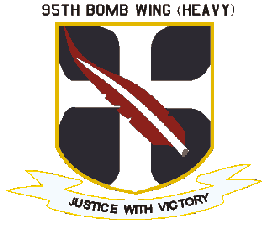
95th Bomb Wing
Biggs AFB, Texas
In 1959 the 95th Converted to B-52Bs, lost the 335th and 336th and gained the 917 Aerial Refueling Squadron, along with KC-135As. At its peak the wing had nineteen B-52s and eight KC-135s. The 95th participated in regular REFLEX excersizes to Andersen AFB, Guam during its existence. In the September, 1965 issue of National Geographic (pg. 308) is a photo of B-52s standing alert on Guam. At least three 95th BW birds are visible. In late 1965 the Department of the Air Force announced that the B-52Bs in service would be retired. This was due to several reasons, one being that with the build up in Viet Nam spare parts for BUFFs could become scarce. The wing lost its B-52s in 1966 and officially inactivated on June 26. With that deactivation, Biggs AFB was closed and the field turned over to the Army.
During the B-52 era, the 95th lost two aircraft: 53-0390, which was lost on January 19, 1961 due to structural failure and 53-0380 (Ciudad Juarez). The latter was shot down by an AIM-9 Sidewinder accidentally fired from a New Mexico Air National Guard (188th FIS) F-100A.
Known serial numbers:
B-36D 44-92027, -92029, -92036, -92038, 92039, -92040, -92041, -92045, -92047, -92049, -92052, -92053, -92054 and -92097.
B-36J 52-2214, -2217 (preserved at the Strategic Air & Space Museum), -2219, -2220 (on display at the US Air Force Museum), -2224, -2226, -2813, -2820, -2824 and -2827 (Preserved at the Pima Air and Space Museum).
B-52B 53-0377. -0378, -0379 , -0380 ("Ciudad Juarez"), -381, -0383, -0385, -0386, -0387, -0388 (the first "City of El Paso"), -0389, -0390, -0391 (the second "Ciudad Juarez"1), -0392, -0394 (the second "City of El Paso"), -0395, -0396, -0397 and -0398.
KC-135A 58-0054, -0085 and 62-3559.
HU-16B 51-0006
C-123B
54-0655 (Base Flight)
U-1A 55-3256, 55-3257 and 58-1696
1. Bob Williams
stated: "The second B-52 named Ciudad Juarez was
tail number 30391. It was the last B-52 to leave Biggs. I
know this because I was the gunner. There was quite a
ceremony and lunch at the Officers Club with the Mayor of
Juarez in attendance and some other dignitaries. The
flight nearly had a tragic end as we were struck by
lightning not far from the bone yard in Tucson. The
airplane was severely damaged, radars blown out, right
wing end blown up, number 7&8 engine pod was nearly
blown off the wing."
B-36 Era
1953 - 1959
The other unidentified bird is under an overcast sky at an
unknown location.
 |
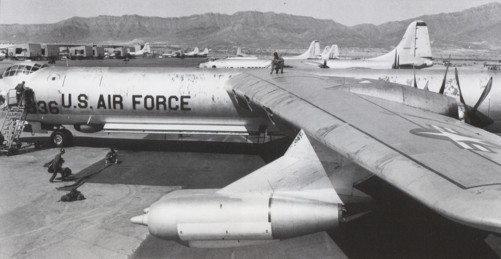 |
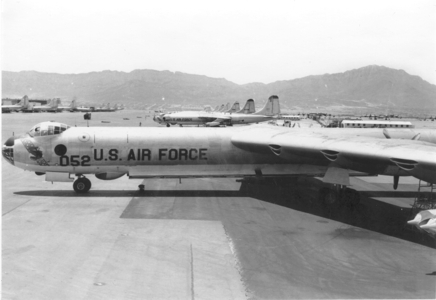 |
B-36D 44-92039 at an unknown location sometime in 1956.
A row of B-36Ds on the ramp at Biggs. The first B-36
is serial 44-92036, in the background are numerous B-36s,
mobile maintenance docks, the VHB Hangar with the Franklin
mountains in the distance. This photo seems to be
one in a series. In Meyers K. Jacobsen book on the B-36 (pg
122) is a photo taken from on top of 036 looking down this
line of bombers, which are lined up for inspection.
This photo was probably taken when the aircraft were being
prepared for that inspection.
B-36D 44-92052 in
the foreground with others in the background. 036 from
the previous photo
should be number five in this photo. (USAF)
 |
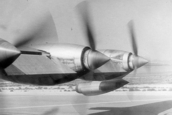 |
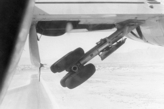 |
 |
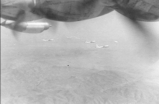 |
The above photos are courtesy of J.W. Sheffield.
The photos are captioned (not visible in the thumbnails)
and were taken during October, 1956. From the
terrain visible it is possible that the formation is
in the area of McNary, Texas.
 |
The B-36 was what would be considered
today a "maintenance hog". It was a very complex
machine requiring a great many man hours to keep
operational, but it was also the backbone of SAC for
several years. Due to the strategic importance it
held, it was worth every penny needed to keep it
aloft. The following thumbnail panels are pages
scanned from a yearbook on the 810th Air Division
published in 1954. Some of the linked photos are
very large.
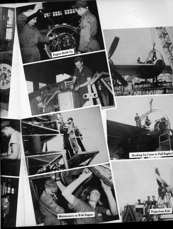 |
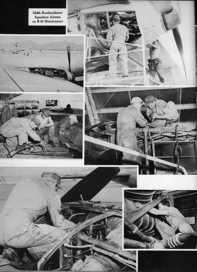 |
 |
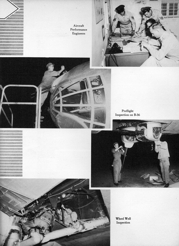 |
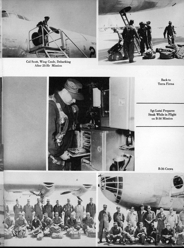 |
As can be imagined, the lion's share
of effort was spent on keeping the R-4360 engines in top
shape. The first two panels illustrate this point
very well. Many of the photos in the last three
panels are of pre-flight and post flight procedures.
The bottom photo in the third panel shows an aircrew
inspecting the wheel well of a B-36. Both are
wearing parachutes.
 |
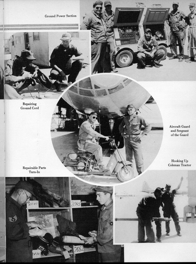 |
 |
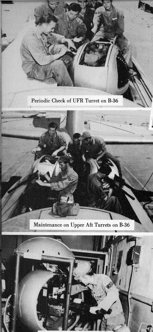 |
With an empty weight of around 170,000
lbs and a max gross takeoff weight of up to 410,000 lbs
(B-36J), some serious muscle was needed to move
airplanes. In the upper left photo, first panel a Federal
F-55-AF tug is shown towing a B-36. The
F-55-AF was a license built version of the Coleman
CF-55-AF. In the lower right photo, second panel
behind the crew hooking up a tow bar is a B-36
marked with a large triangle on the vertical tail.
That triangle denoted the 8th Air Force and was used in
the early part of the 1950s. It was phased out
shortly after the 95th was formed in 1953 and was never
(supposedly) carried by 95th BW aircraft. It
therefore must have represented an aircraft assigned, or
recently transferred from either the 6th BW (Triangle R),
7th BW (Triangle J), 11th BW (Triangle U), or the 28th BW
(Triangle S). As the geometric tail markings
disappeared SAC aircraft became rather plain until the
introduction of the SAC "Milky way" band on all aircraft
and the anti flash white belly on bombers.
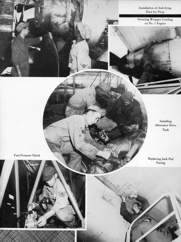 |
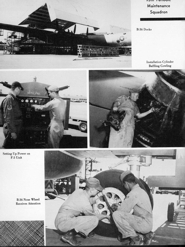 |
 |
 |
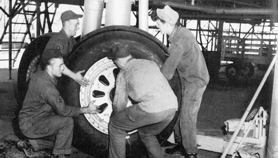 |
The three crew members standing in the bomb bay give a
good indication of the massive size of the B-36. A
tire change is never a fun task and on large aircraft it
can be very dangerous. (USAF)
 |
A very
plain looking B-36D parked on the ramp at Biggs.
Contrary to what the caption reads the aircraft in the
foreground is a C-124, not a KC-97. Once again, a
pesky censor has scratched out the serial number from the
negative. (USAF)
 |
A B-36D passing over the
camera. As with all radial engine powered aircraft,
this one has various oil streaks and stains. "You
must remember, a radial does not leak. It just marks
its territory." (USAF)
 |
A
Featherweight B-36J taking off from Biggs AFB. This
is late in the B-36's career, the belly is white, the SAC
band is carried on both sides of the nose, the 95th emblem
on the right and the SAC patch on the left. The
leading edge of the jet intake is painted in the squadron
color also. (US Army)
 |
B-36J 52-2827 prior to her
retirement flight on February 12, 1959. That flight
was to the Greater Southwest Airport in Fort Worth,
Texas. She was to remain in Fort Worth, shuttled
about to various locations until finally going (by
truck) to the Pima Air & Space Museum in Tucson
during the summer of 2005. (Larry Payne)
 |
827 is
now on display at the Greater Southwest Airport in Fort
Worth in this undated photo. It was most likely
sometime after this that the airplane picked up the name "The City of Fort Worth",
which it never seemed to carry while in service.
(There are some B-36
reference photos
posted on Photobucket.)
 |
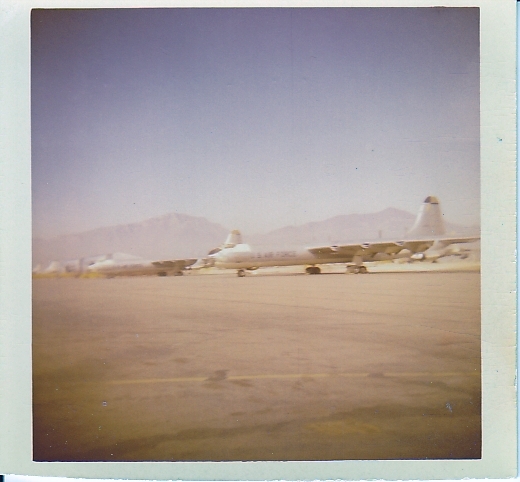 |
 |
 |
 |
 |
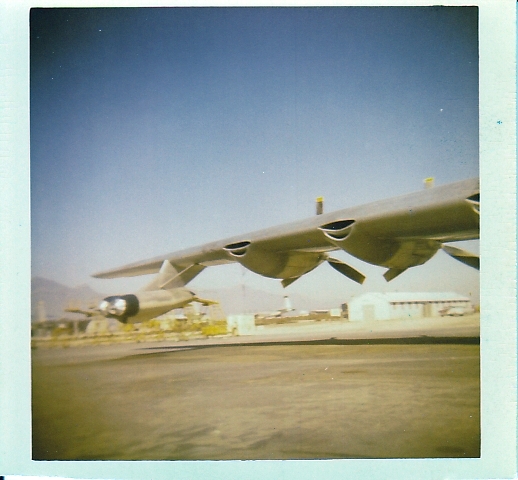 |
 |
 |
 |
 |
 |
 |
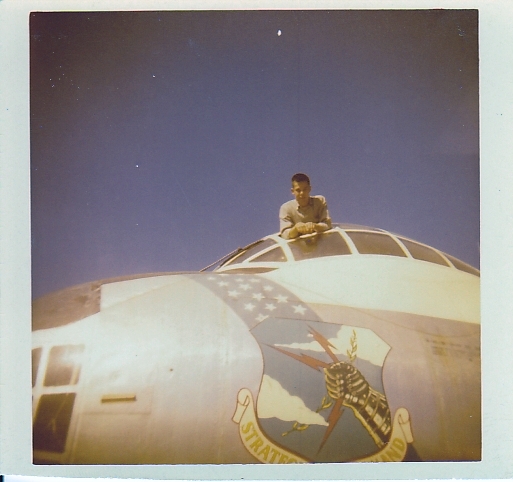 |
 |
 |
 |
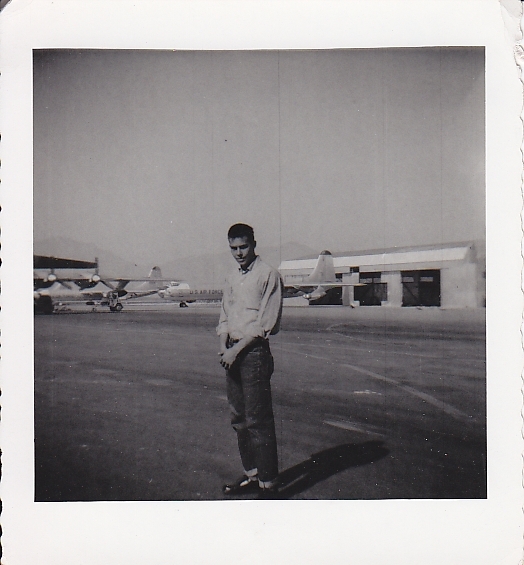 |
While 52-2827 does not appear in any
of the photos, the next to the last shot shows 52-2220
which is now on display in the National Museum of the
United States Air Force.
 |
Ciudad Juarez possibly
when she was still with the 93rd BW and prior to being
named. (Larry Payne)
B-52B
53-0380 was the first Ciudad
Juarez, the aircraft shot down by a New Mexico
ANG F-100A. (John Paul Jones)
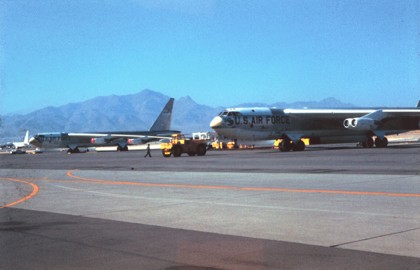 |
 |
Two
views of 53-0383 at Biggs. The second photo shows a
B-52 without a fuel load, or bomb load, resulting in the
out rigger wheels not touching the ground on both sides.
 |
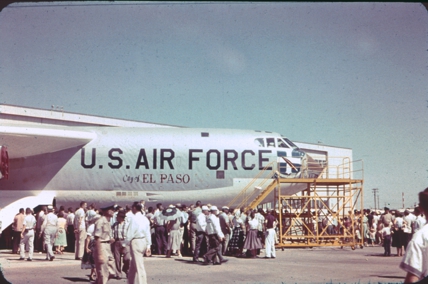 |
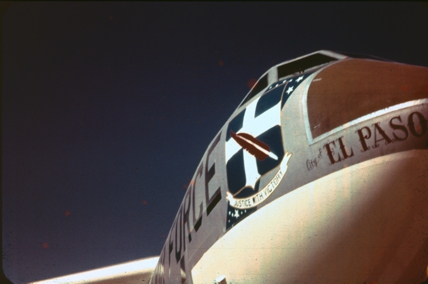 |
 |
 |
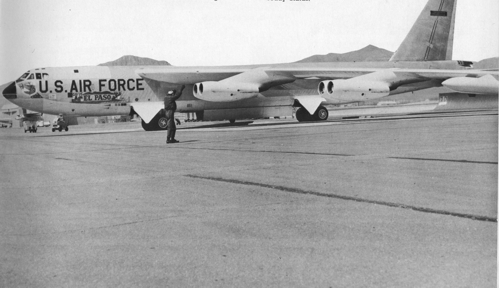 |
 |
 |
 |
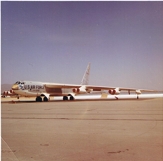 |
 |
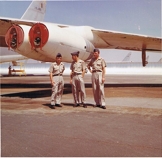 |
 |
 |
 |
 |
 |
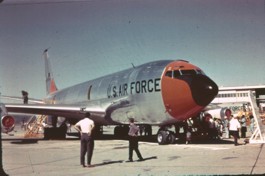 |
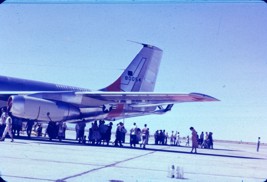 |
 |
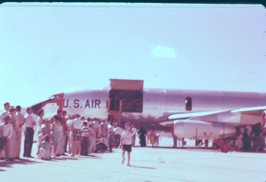 |
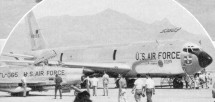 |
This photo from a yearbook on the 95th BW shows 58-0085 at
a later date. The 95th badge is now in place on the
International orange panel on the nose. It is hard
to see, but this airplane also has the International
orange stripe on the tail like the aircraft above.
The F-86L in the foreground is possibly assigned to
the 331st Fighter Interceptor Squadron at Webb AFB.
(USAF)
62-3559 at an even later date. This photo was
scanned from an old postcard and is somewhat grainy,
but it shows that by this time period (probably about
1963) SAC bands are now in effect and the 95th BW
badge is applied over the band. Note that the
portions of the engine nacelles that had appeared to
be white are now clearly Aircraft Gray. (USAF)
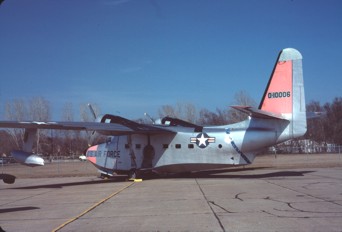 |
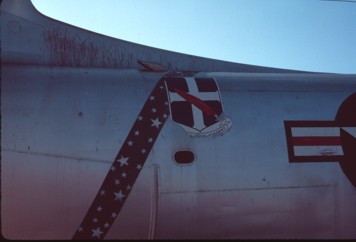 |
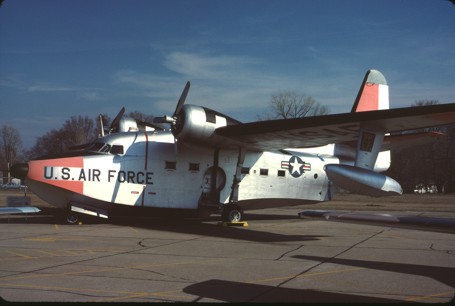 |
During the 1950s and 1960s SAC operated a
number of HU-16 Albatross amphibians for various
duties. The 95th BW operated this HU-16B
(51-0006). This aircraft is now on display at the
Strategic Air&Space Museum in Ashland, Nebraska.
 |
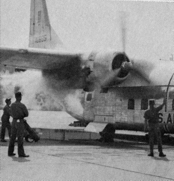 |
The C-123B was also used
extensively for support by SAC. 54-0655 is shown at
Biggs in 1964. Whether or not 655 was assigned to the
95th, or directly to Biggs is unknown. The photo to
the left shows a pre-flight and the one to the is during
engine start up. (USAF)
Regarding
"655" I received this tidbit from Frank Henson: "Having
been in the 95th OMS at the time of this photo I can
tell you this aircraft was assigned to base flight
and did not have the 95th BW markings."
 |
 |
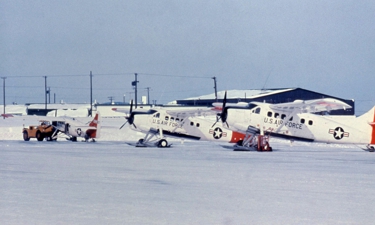 |
U-1A Otters at Goose Bay Labrador during the 1960's. Three U-1As (55-3256, 55-3267 and 58-1696) were inherited by the 95th Strategic Wing from the 4082nd Strategic Wing at Goose Bay Labrador. This happened when the 4082nd was re-designated as the 95th SW. The caption to the first two photos state that the aircraft is 55-3312, however that aircraft is not in the list of Otters operated by the 95th. It is quite possible that it is another aircraft misidentified, or was just overlooked. The float carries a number that appears to be "267", so it is most likely 55-3267. 267 is also the aircraft in the background of the third photo. (Don Garrett collection)